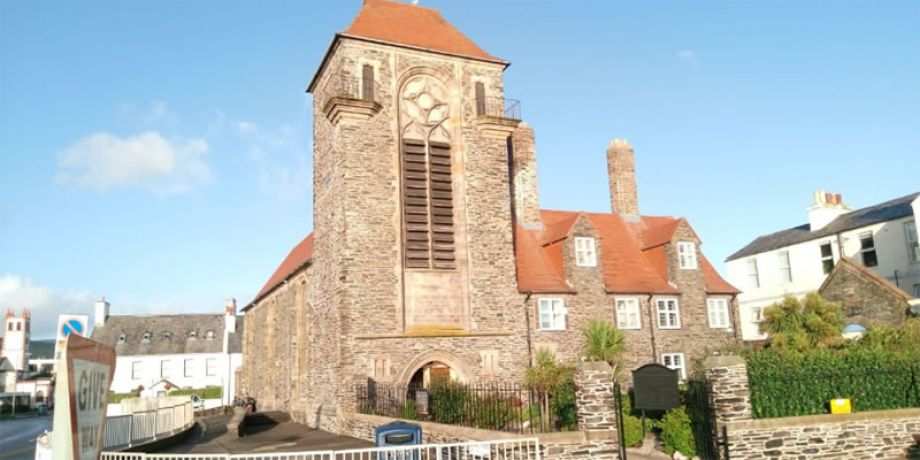
The seafront at Ramsey on the Isle of Man boasts some impressive structures, but pride of place must go to the Catholic church. Dating from 1910, it is legally protected as a scheduled “listed building” due to its beauty and architectural merit.
Yet, take a closer look and you’ll notice something odd. Next to its side wall stands a classic 1935 K6 telephone box. The “red box” is recognized the world over as a symbol of Britain. Although de-commissioned in 1985, it has retained a place in the public imagination.

But why is it here? Has it just “materialized” like Dr. Who’s “Tardis?” The answer lies in the identity of the church’s architect.
“Our Lady, Star of the Sea” is the work of Sir Giles Gilbert Scott, part of the renowned Gilbert Scott architectural dynasty. His more famous grandfather, Sir George Gilbert Scott, produced many notable buildings in the Victorian era, chief among them London’s Albert Memorial. Giles himself was responsible for such works as Battersea Power Station by the River Thames and Liverpool’s Anglican Cathedral.
However, he is probably best known for having won the 1924 competition for the design of a national telephone box. Crafted in a classical style, topped by a dome and painted red, the box became standard issue throughout the country. The population immediately took it to their hearts.
But that is God for you. How often He manifests Himself in life’s connections. Connections between missionaries. Connections between Christians. Connections, even, between a church, an architect and a red telephone box.
One of those who retained an affection for it was Ramsey Parish Priest Fr. Brian O’Mahony. Struck by the link between it and the church, he decided it’d be a good idea to have them side by side. The problem was, how was he to obtain one? Since disappearing from the streets they had become collectors’ items and increasingly difficult to find.
While conducting an appeal on behalf of the Columban missionaries in his parish, Fr. Brian told me what happened next.

“I asked the telephone company if I could buy one, but they said they didn’t have any left. Then, I received a tip-off, telling me that someone had two of them. I went over and talked to the owner. Maybe he’d sell me one? He said ‘yes, maybe…for £4,000!’” But that was impossible. Fr. Brian was walking away, when suddenly the gentleman called him back. “’What’s your interest?’, he asked. I explained the situation and he said, ‘look, I’m a Christian too. I help support an orphanage in Belarus. Tell you what. Give a contribution to the orphanage and you’ve got the box.’ So I did.”
Fr. Brian needed a crane to lift the call box into place, but he assured me the effort was worth it. The connection had been made.
Funnily enough, as we talked, it became clear that there were connections between him and I as well. As a Columban, I am a missionary priest, and it turns out he is as well. He is a Spiritan, a Member of the Congregation of the Holy Spirit (formerly known as the “Holy Ghost Fathers”). I’d served in South America; he’d ministered in Africa. More remarkably still, an early inspiration for him back home in Liverpool had been a Columban — Fr. Hugh Bennet. Fr. Hugh was one of our old “China hands,” who’d gone to China in 1934, stayed there during the war years and suffered expulsion by the new regime in 1951.
But that is God for you. How often He manifests Himself in life’s connections. Connections between missionaries. Connections between Christians. Connections, even, between a church, an architect and a red telephone box.
Columban Fr. John Boles lives and works in Britain.